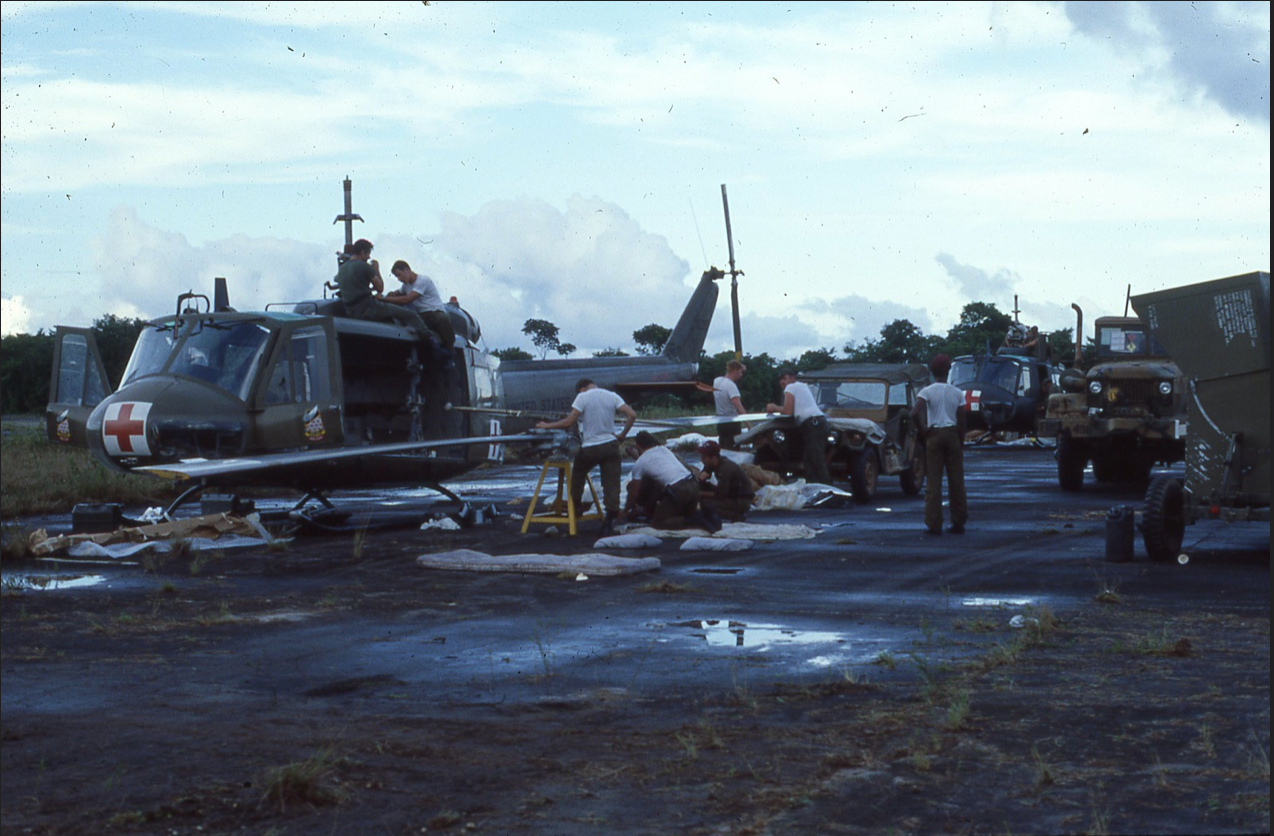
A new website has been launched to provide information about the U.S. military’s response to the Jonestown tragedy of the Peoples Temple agricultural mission in Guyana in November 1978. Unique to the Military Response to Jonestown website are interviews with military personnel involved in the response, as well as statements and original photographs which they have provided. It also includes government documents which have been released under the Freedom of Information Act, as well as articles and studies collected from military, government and academic resources.
Among the interviews conducted so far:
- Doug Cohee, an Air Force combat controller who arrived at the Timehri Airport in Georgetown, Guyana, the day after the Jonestown tragedy of November 18, 1978;
- Clarence Cooper, serving with the US Army and retiring as a Lt. Colonel, was deployed to Jonestown anticipating engaging in a search and rescue operation. Upon arriving, he learned there was no one to rescue;
- When more than 900 remains of Peoples Temple members arrived at Dover Air Force Base in Delaware, Patricia Edwards worked to gather resources to meet the challenge (Ms. Edwards is also featured in a Time Magazine retrospective on Peoples Temple commemorating the 40th anniversary of the Jonestown deaths);
- Randy Johnson, the Guyanese army commander of the northern sector of Guyana at the time of the Jonestown tragedy in in November 1978;
- Mark Massar was a sergeant in the Air Force who was stationed at Dover Air Force Base when remains of the Jonestown/Peoples Temple tragedy in November 1978 were stored there. While Massar had little involvement with the processing of the remains, he does recall a troubling psychological environment on the base that he attributes, at least in part, to the presence of the remains;
- David Netterville, a member of Air Force special forces based in Panama in November 1978, was one of the first three U.S. military members to set foot in Jonestown after the tragedy (a tribute video to Sgt. Netterville was posted in conjunction with the 40th anniversary of the Jonestown deaths);
- David Pompili, a U.S. Army Logistics Sergeant who served at the Timerhi International Airport in Georgetown, Guyana’s capital, preparing the more than 900 bodies of Americans who died at Jonestown for flights to Dover Air Force Base in Delaware;
- As an UH-1 Huey helicopter pilot, Bob Price participated in the collection of the more than 900 bodies found at Jonestown.
- Joseph Saxon, an Air Force public affairs officer at Dover Air Force Base in Delaware when some 900 bodies from the tragedy at Jonestown in Guyana arrived there in late November 1978;
- Ivo Spalatin, a member of the Staff Investigative Group of the U.S. House of Representatives Committee on Foreign Affairs which was charged with investigating the murder of Congressman Leo Ryan;
- Robert Staats, an Army veteran who served near McGuire Air Force Base in New Jersey where some bodies from Jonestown, Guyana, were returned to the United States;
- Paul Storm, who served on U.S. Marine Corps security details at U.S. embassies in Chile and China, in addition to his service at the American Embassy in Georgetown, Guyana in November 1978;
- Ronald Taylor, an army crew chief when the tragedy of Jonestown in Guyana unfolded, during that event, he served aboard a Army U-21 aircraft, the purpose of which was search and rescue;
- Mark Woodhull, an Air Force career veteran who served in Vietnam, Laos, and Panama in addition to his work with the military during the Peoples/Temple Jonestown tragedy.
Anyone involved in any capacity with the military/government response to the Jonestown tragedy is invited to share his or her memories and other information. Discussions may be recorded remotely using Zoom or in person at John Brown University in Arkansas. Email Preston Jones at pjones@jbu.edu or call at (479) 238-8688.